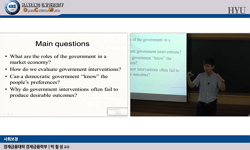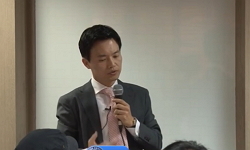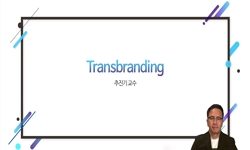Objectives: One of the main objectives of the Targeted Subsidies Law (TSL) in Iran was to improve equity in healthcare financing. This study aimed at measuring the effects of the TSL, which was implemented in Iran in 2010, on equity in healthcare fina...
http://chineseinput.net/에서 pinyin(병음)방식으로 중국어를 변환할 수 있습니다.
변환된 중국어를 복사하여 사용하시면 됩니다.
- 中文 을 입력하시려면 zhongwen을 입력하시고 space를누르시면됩니다.
- 北京 을 입력하시려면 beijing을 입력하시고 space를 누르시면 됩니다.


Effects of Iranian Economic Reforms on Equity in Social and Healthcare Financing: A Segmented Regression Analysis
한글로보기https://www.riss.kr/link?id=A105273185
-
저자
Hamed Zandian (Ardabil University of Medical Sciences) ; Amirhossein Takian (Tehran University of Medical Sciences) ; Arash Rashidian (Tehran University of Medical Sciences) ; Mohsen Bayati (Shiraz University of Medical Sciences) ; Telma Zahirian Moghadam (Iran University of Medical Sciences) ; Satar Rezaei (Kermanshah University of Medical Sciences) ; Alireza Olyaeemanesh (Tehran University of Medical Sciences)

- 발행기관
- 학술지명
- 권호사항
-
발행연도
2018
-
작성언어
English
- 주제어
-
등재정보
KCI등재,SCOPUS
-
자료형태
학술저널
- 발행기관 URL
-
수록면
83-91(9쪽)
-
KCI 피인용횟수
0
- 제공처
-
0
상세조회 -
0
다운로드
부가정보
다국어 초록 (Multilingual Abstract)
Objectives: One of the main objectives of the Targeted Subsidies Law (TSL) in Iran was to improve equity in healthcare financing. This study aimed at measuring the effects of the TSL, which was implemented in Iran in 2010, on equity in healthcare financing.
Methods: Segmented regression analysis was applied to assess the effects of TSL implementation on the Gini and Kakwani indices of outcome variables in Iranian households. Data for the years 1977-2014 were retrieved from formal databases. Changes in the levels and trends of the outcome variables before and after TSL implementation were assessed using Stata version 13.
Results: In the 33 years before the implementation of the TSL, the Gini index decreased from 0.401 to 0.381. The Gini index and its intercept significantly decreased to 0.362 (p<0.001) 5 years after the implementation of the TSL. There was no statistically significant change in the gross domestic product or inflation rate after TSL implementation. The Kakwani index significantly increased from -0.020 to 0.007 (p<0.001) before the implementation of the TSL, while we observed no statistically significant change (p=0.81) in the Kakwani index after TSL implementation.
Conclusions: The TSL reform, which was introduced as part of an economic development plan in Iran in 2010, led to a significant reduction in households’ income inequality. However, the TSL did not significantly affect equity in healthcare financing. Hence, while measuring the long-term impact of TSL is paramount, healthcare decision-makers need to consider the efficacy of the TSL in order to develop plans for achieving the desired equity in healthcare financing.
참고문헌 (Reference)
1 Gerstl S, "Who can afford health care? Evaluating the socio-economic conditions and the ability to contribute to health care in a post-conflict area in DR Congo" 8 (8): e77382-, 2013
2 Mehrolhassani M, "Total health expenditures and proportion of out-of-pocket payments in Iranian provinces; 2008-2014" 12 (12): 1-12, 2017
3 Hamilton JD, "Time series analysis" Princeton University Press 571-, 1994
4 Heshmati A, "The world distribution of income and income inequality: a review of the economics literature" 12 (12): 61-107, 2006
5 Yazdi Feyzabadi V, "The trend of impoverishing effects of out-of-pocket health expenditure in Iranian provinces in 2008-2014" 12 (12): 20-31, 2017
6 Paya A, "The state of social progress of Islamic societies: social, economic, political, and ideological challenges" Springer 211-235, 2016
7 Salehi-Isfahani D, "The reform of energy subsidies in Iran: the role of cash transfers" 51 (51): 1144-1162, 2015
8 Munge K, "The progressivity of health-care financing in Kenya" 29 (29): 912-920, 2014
9 Graeff P, "The impact of economic freedom on corruption: different patterns for rich and poor countries" 19 (19): 605-620, 2003
10 Takian A, "The experience of purchaser-provider split in the implementation of family physician and rural health insurance in Iran: an institutional approach" 30 (30): 1261-1271, 2015
1 Gerstl S, "Who can afford health care? Evaluating the socio-economic conditions and the ability to contribute to health care in a post-conflict area in DR Congo" 8 (8): e77382-, 2013
2 Mehrolhassani M, "Total health expenditures and proportion of out-of-pocket payments in Iranian provinces; 2008-2014" 12 (12): 1-12, 2017
3 Hamilton JD, "Time series analysis" Princeton University Press 571-, 1994
4 Heshmati A, "The world distribution of income and income inequality: a review of the economics literature" 12 (12): 61-107, 2006
5 Yazdi Feyzabadi V, "The trend of impoverishing effects of out-of-pocket health expenditure in Iranian provinces in 2008-2014" 12 (12): 20-31, 2017
6 Paya A, "The state of social progress of Islamic societies: social, economic, political, and ideological challenges" Springer 211-235, 2016
7 Salehi-Isfahani D, "The reform of energy subsidies in Iran: the role of cash transfers" 51 (51): 1144-1162, 2015
8 Munge K, "The progressivity of health-care financing in Kenya" 29 (29): 912-920, 2014
9 Graeff P, "The impact of economic freedom on corruption: different patterns for rich and poor countries" 19 (19): 605-620, 2003
10 Takian A, "The experience of purchaser-provider split in the implementation of family physician and rural health insurance in Iran: an institutional approach" 30 (30): 1261-1271, 2015
11 Farzanegan MR, "The effects of oil price shocks on the Iranian economy" 31 (31): 134-151, 2009
12 Hu TW, "The effects of economic reform on health insurance and the financial burden for urban workers in China" 8 (8): 309-321, 1999
13 Zamanzadeh H, "Targeted subsidies: achievements, challenges and costs" 9 (9): 108-116, 2011
14 Abbasian E, "Targeted communication of energy subsidies and social welfare through economic growth" 12 (12): 143-173, 2012
15 Wagner AK, "Segmented regression analysis of interrupted time series studies in medication use research" 27 (27): 299-309, 2002
16 Hassanzadeh E, "Recent developments in Iran's energy subsidy reforms"
17 Hajizadeh M, "Out-of-pocket expenditures for hospital care in Iran: who is at risk of incurring catastrophic payments?" 11 (11): 267-285, 2011
18 Zandiyan H, "Measuring inequality of distribution of health resources: a case study" 11 (11): 799-805, 2012
19 Guillaume D, "Iran-the chronicles of the subsidy reform"
20 Ramsay CR, "Interrupted time series designs in health technology assessment: lessons from two systematic reviews of behavior change strategies" 19 (19): 613-623, 2003
21 Monnin P, "Inflation and income inequality in developed economies"
22 Mostafavi H, "Inequitable distribution of specialists and hospital beds in west Azerbaijan province" 9 (9): 55-66, 2015
23 Kavosi Z, "Inequality in household catastrophic health care expenditure in a low-income society of Iran" 27 (27): 613-623, 2012
24 Vincens N, "Income inequality, economic growth and stroke mortality in Brazil: longitudinal and regional analysis 2002-2009" 10 (10): e0137332-, 2015
25 Yazdi Feyzabadi V, "Incidence and intensity of catastrophic health expenditures in Iranian provinces; 2008-2014" 12 (12): 40-54, 2017
26 Evans DB, "Health systems financing and the path to universal coverage" 88 (88): 402-, 2010
27 Davari M, "Health care financing in iran; is privatization a good solution?" 41 (41): 14-23, 2012
28 Yusuf AA, "Fuel taxes and the poor: the distributional effects of gasoline taxation and their implications for climate policy" RFF Press 171-180, 2012
29 Hajizadeh M, "Equity of health care financing in Iran: the effect of extending health insurance to the uninsured" 38 (38): 461-476, 2010
30 Hajizadeh M, "Equity of health care financing in Iran"
31 Doshmangir L, "Effects of targeted subsidies policy on health behavior in Iranian Households: a qualitative study" 44 (44): 570-579, 2015
32 Cabieses B, "Did socioeconomic inequality in self-reported health in Chile fall after the equity-based healthcare reform of 2005? A concentration index decomposition analysis" 10 (10): e0138227-, 2015
33 Rezaei S, "Determinants of healthcare expenditures in Iran: evidence from a time series analysis" 30 : 313-, 2016
34 Zandian H, "Contribution of targeted subsidies law to the equity in healthcare financing in Iran: exploring the challenges of policy process" 8 (8): 1892-1903, 2016
35 Khan JA, "Catastrophic healthcare expenditure and poverty related to out-of-pocket payments for healthcare in Bangladesh-an estimation of financial risk protection of universal health coverage" 32 (32): 1102-1110, 2017
36 Giles DE, "Calculating a standard error for the Gini coefficient:some further results" 66 (66): 425-433, 2004
37 O'Donnell OA, "Analyzing health equity using household survey data: a guide to techniques and their implementation" 1-165, 2008
38 O'Donnell O, "Analyzing health equity using household survey data a guide to techniques and their implementation"
39 Pourasghari H, "Analysis of equality in Iranian household healthcare payments during Iran's fourth development program" 8 (8): 2645-2649, 2016
동일학술지(권/호) 다른 논문
-
- 대한예방의학회
- Muhammad Tariq Karim
- 2018
- KCI등재,SCOPUS
-
Barriers to Health Service Utilization Among Iranian Female Sex Workers: A Qualitative Study
- 대한예방의학회
- Mehran Asadi-AliAbadi
- 2018
- KCI등재,SCOPUS
-
- 대한예방의학회
- 전용우
- 2018
- KCI등재,SCOPUS
-
An Analysis of Infectious Disease Research Trends in Medical Journals From North Korea
- 대한예방의학회
- 박도현
- 2018
- KCI등재,SCOPUS
분석정보
인용정보 인용지수 설명보기
학술지 이력
| 연월일 | 이력구분 | 이력상세 | 등재구분 |
|---|---|---|---|
| 2023 | 평가예정 | 해외DB학술지평가 신청대상 (해외등재 학술지 평가) | |
| 2020-01-01 | 평가 | 등재학술지 유지 (해외등재 학술지 평가) |  |
| 2010-06-28 | 학술지명변경 | 외국어명 : The Korean Journal of Preventive Medicine -> Journal of Preventive Medicine and Public Health |  |
| 2010-01-01 | 평가 | 등재학술지 유지 (등재유지) |  |
| 2008-01-01 | 평가 | 등재학술지 유지 (등재유지) |  |
| 2006-01-01 | 평가 | 등재학술지 유지 (등재유지) |  |
| 2004-01-01 | 평가 | 등재학술지 유지 (등재유지) |  |
| 2001-01-01 | 평가 | 등재학술지 선정 (등재후보2차) |  |
| 1998-07-01 | 평가 | 등재후보학술지 선정 (신규평가) |  |
학술지 인용정보
| 기준연도 | WOS-KCI 통합IF(2년) | KCIF(2년) | KCIF(3년) |
|---|---|---|---|
| 2016 | 0.3 | 0.3 | 0.39 |
| KCIF(4년) | KCIF(5년) | 중심성지수(3년) | 즉시성지수 |
| 0.31 | 0.32 | 0.784 | 0.13 |




 KCI
KCI






